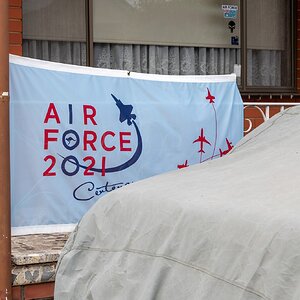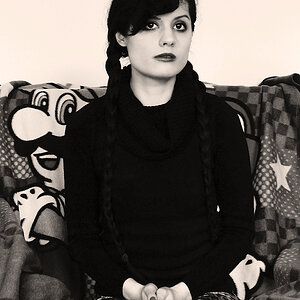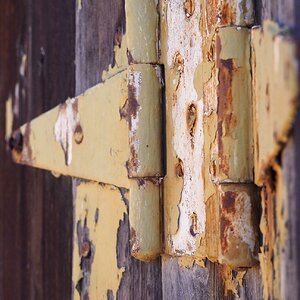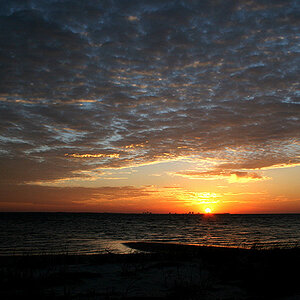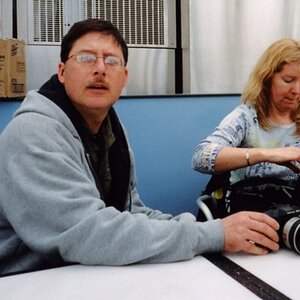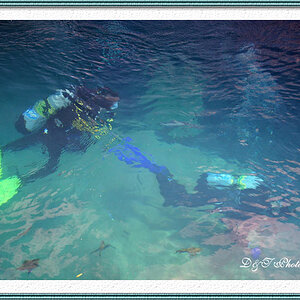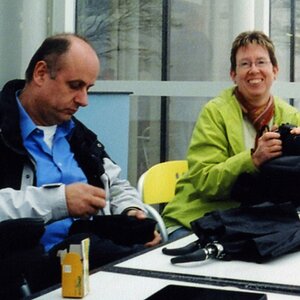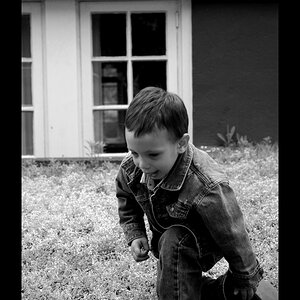Grandpa Ron
Been spending a lot of time on here!
- Joined
- Aug 9, 2018
- Messages
- 1,155
- Reaction score
- 700
- Can others edit my Photos
- Photos OK to edit
For several nights I have been trying to take a picture of Jupiter. The shots were always blurry (jumpy) no matter how fast the shutter speed. I was blaming this on the thick atmosphere from the low horizon position and poor "Seeing" conditions.
Last night the sky was particularly clear and viewing through the telescope was unusually good. I finally realized the problem was the mirror bounce as the shot was taken.
The setup is a follows,
The first figure is a picture of my telescope; a tube with a 6 inch diameter 48 inch focal length mirror, a second mirror to bend the beam 90 degrees, an lens mount to hold the camera. Nothing exotic.
The second figure is the blurred Jupiter image due to camera mirror bounce.
The third figure is Jupiter and all four moons at 1/8th second.
The fourth figure is shot at 1/20th and the forth moon is just visible if you know when to look.
Next will be trying color filters and changing the ISO to try to improve the brightness latitude.
I hope this information encourages others to experiment and expand their photographic horizons.




Last night the sky was particularly clear and viewing through the telescope was unusually good. I finally realized the problem was the mirror bounce as the shot was taken.
The setup is a follows,
- A home made Dobson telescope with a 1220 mm (48") reflector mirror focal length.
- A 2x Barlow lens attached to camera telescope mount for proper focal distance.
- Camera mirror locked into shooting position to eliminate mirror bounce.
- Camera shutter delay 10 seconds, to allow the scope to settle.
- ISO 6400 for a quick shutter time.
- Shutter speed 1/8 to 1/20 second to capture planet and moons.
The first figure is a picture of my telescope; a tube with a 6 inch diameter 48 inch focal length mirror, a second mirror to bend the beam 90 degrees, an lens mount to hold the camera. Nothing exotic.
The second figure is the blurred Jupiter image due to camera mirror bounce.
The third figure is Jupiter and all four moons at 1/8th second.
The fourth figure is shot at 1/20th and the forth moon is just visible if you know when to look.
Next will be trying color filters and changing the ISO to try to improve the brightness latitude.
I hope this information encourages others to experiment and expand their photographic horizons.


![[No title]](/data/xfmg/thumbnail/31/31754-af76ae89cc75bd1855937374ff359efe.jpg?1619734992)
